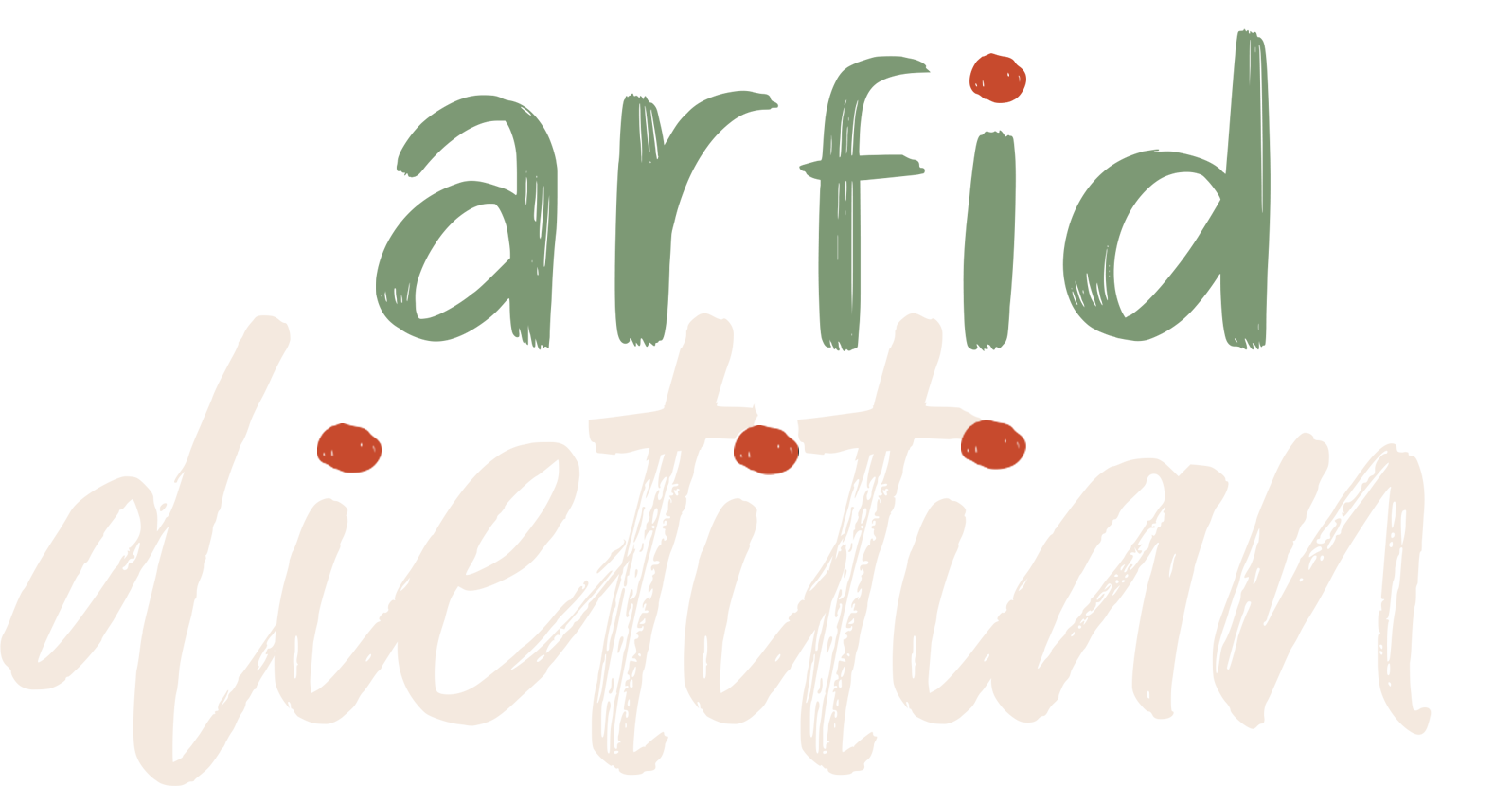When you think of meal planning the first words that come to my mind are a structured 3 meal, 3 snacks plan; recipes; cooking or meal preparation for all meals/snacks; “perfectly” plated meals.
“Typical” meal planning often does not work or support the needs of those with ARFID.
- It may be too rigid for some who need a more flexible meal structure.
- Doesn’t support those who need more executive functioning support around meals and eating.
- It may be too overwhelming and make eating more inaccessible.
So what does meal planning with ARFID look like?
1. VERY INDIVIDUAL!
- There is no one fits all meal plan for ARFID
- What works for one person, may not for another person
- Should be client centered and client goal focused.
2. Often includes support system and accommodations
- It’s ok to get others to support you around food preparation and accessing food.
- You may need accommodations like convenience foods or grocery delivery to make eating accessible.
3. It goes beyond ” what to eat” and “when”
- Also includes “how”
- How will you access foods?
- What supports you to remember to eat?
- What helps you decide what to eat?
Things to think about when meal planning with ARFID?
- What are your goals/values?
- What structure/routine works for you?
- Do you need a rigid structure, something structured but flexible, or very flexible?
- What food meets your preferences/executive functioning?
- Create/refer to your food list!
- What types of foods meet your executive functioning needs – convenience foods/some prep, or a mix?
- What does accessing food look like?
- How do you access food? Do you grocery shop online, have someone else purchase food?
- What does remembering to eat look like?
- Hunger cues, low demand alarms or others to remind you?
- What does deciding what to eat in the moment look like?
- Referring to a food list? Having a few set ideas? A more specific meal routine?
- What are your support needs around food?
- DO you need someone to support you around grocery shopping, preparing foods or reminding you to eat?
These are all questions I explore with my clients to help support them with eating. For some we are working on building their support network to make eating more accessible while for others we may be exploring what type of routine and foods they need to make eating accessible for them.
If you are looking for more support around eating with ARFID consider checking out our virtual nutrition counseling services as well as our Adult ARFID Support Community.

